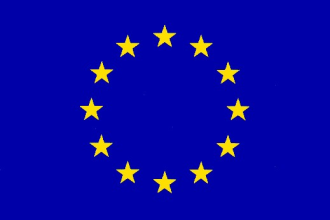A long period (spanning more than 10 years) of protracted negotiations between the European Union (EU) and six Members States (MS) of the Southern African Development Community (SADC) namely, Botswana, Lesotho, Namibia, Swaziland, South Africa and Mozambique known as the SADC EPA Member States culminated in a new economic partnership agreement (EPA). The negotiations came to an end when the negotiators initialled an agreed text in July 2014. The parties finally signed the Agreement on 10 June 2016 in Kasane, Botswana.
The Agreement, which entered into force on 16 October 2016, provisionally and into full force in February 2018, promises several important benefits for the parties. In particular, it provides for concessions allowing entry of goods to their respective markets, it introduces safeguards to protect their respective markets from injury, it brings on board better and flexible rules of origin, and allows for the protection of products known to originate in their countries (what is known as ‘geographical indications’). It also has a significant financial package which is intended to support the implementation in the SADC EPA States.
The objectives of the EPA as articulated in Article 1, include:
- contributing to the reduction of poverty in the region;
- promoting the integration of the SADC EPA MS into the world economy;
- promoting regional integration, economic cooperation and good governance, leading to an effective, predictable and transparent regional regulatory framework for trade and investment between the Parties and among the SADC EPA States;
- improving the capacity of SADC EPA Member States in trade policy and trade-related issues;
- promoting increased investment and private sector initiatives, enhance supply capacity, competitiveness and economic growth in the participating SADC Member States; and
- strengthening the existing relations between the parties on the basis of solidarity and mutual interest.
These objectives are in line with the objectives of the SADC Regional Indicative Strategic Development Plan (RISDP). Trade is at the core of the Agreement. The Agreement introduces four key innovations in this area, namely:
- tariff liberalization, which involves extension of concessions by the two parties, allowing entry of goods from either region into their respective markets;
- safeguard measures which seek to protect domestic industries from injury arising from increased competition;
- rules of origin, which allow cumulation of origin (which is a concession under which allows enterprises in SADC-EPA MS to use foreign components and still benefit from free access to the EU market); and
- protection of geographical indications (GIs). GIs are the names of products which originate in the territory of a particular country, region or locality where a quality, reputation or other characteristic is closely linked to the product’s geographical origin.
The Agreement, in Articles 13-15, provides for priority areas of cooperation and the possible types of interventions. The main priority areas of cooperation include:
- trade in goods in order to enhance the capacity of SADC EPA States to trade;
- supply-side competitiveness aimed at removing supply-side constraints and increasing the competitiveness of SADC EPA States;
- business-enhancing infrastructure that seeks to develop a competitive environment in ICT, transport and energy;
- trade in services as provided for in Article 73;
- trade-related issues (environmental and labour standards, trade and investment and their link to sustainable development) as provided in Articles 8-15;
- trade data seeking to improve the capacity of SADC EPA States in the area of trade data capture, processing and dissemination;
- EPA institutional capacity building intended to support the institutional structures for EPA implementation management, capacity for trade negotiations, and trade policy cooperation; and
- fiscal reforms and measures related to them in order to mitigate the net fiscal effect of the Agreement.
The Agreement also provides, in Article 15, for certain types of interventions in the identified priority cooperation areas. These include: (a) policy development, (b) legislation and regulatory framework development, (c) institutional/organisational development, (d) capacity building and training, (f) technical advisory services, (f) administrative services, (g) support in SPS and TBT areas, and (h) operational support (such as equipment, materials and related works).
Beyond trade, the Agreement also contains provisions which commit both the EU and the individual Member States to support the implementation of the Agreement through financial cooperation (Articles 12-15). Finally, the EPA contains provisions (Articles 100-122) creating the institutions responsible for its management such as the Joint Council, the Trade Development Committee as well as the special committees all charged with the management of the Agreement. At national level there are a number of government agencies, led by the respective ministries of trade to implement the Agreement. At the regional level, the SADC Secretariat, through the EPA Unit, is taking the lead in coordinating and monitoring the implementation of the Agreement.
The implementation of the Agreement is being supported with funding from the EU under the European Development Fund (EDF).


